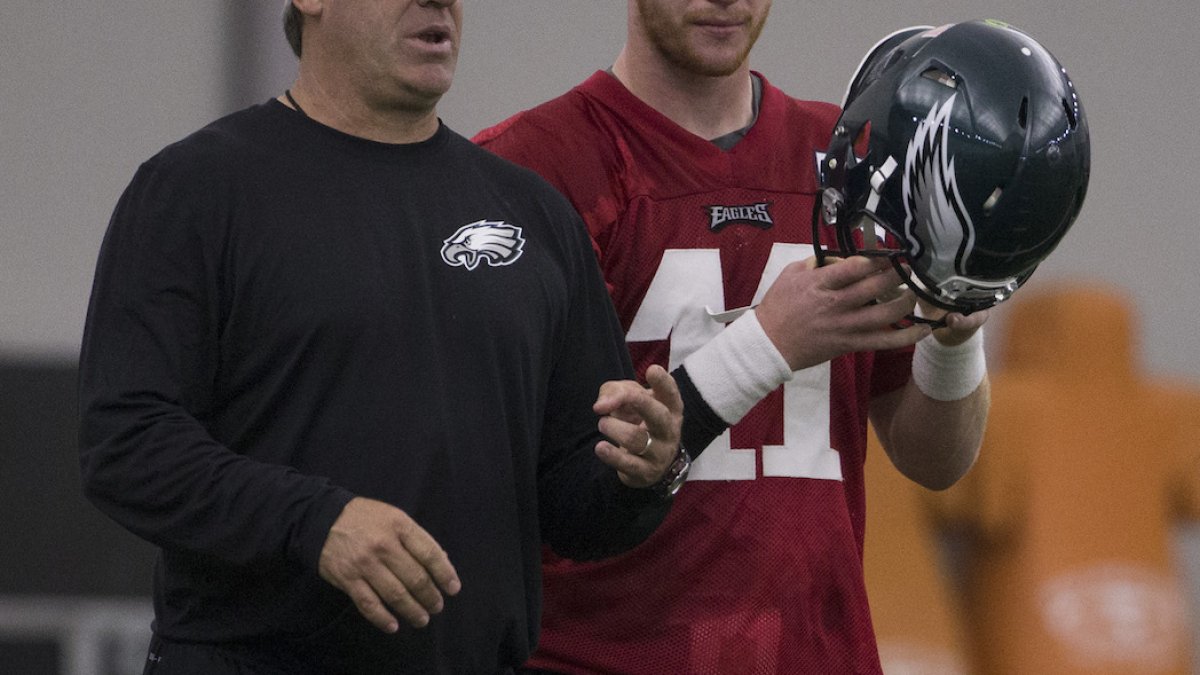Editor’s note: Every weekday in “Daily Focus,” PFF analysts take the latest NFL news and translate what it really means for each team involved.
What to make of the Philadelphia Eagles' quarterback competition: Offensive coordinator Frank Reich said Wednesday that it should not be assumed that Sam Bradford is the No. 1 QB on Philadelphia's depth chart, stressing competition at the position.
This statement is one reason Bradford was so keen to force a trade out of Philadelphia the moment the team made its big trade up in the draft to select Carson Wentz out of North Dakota State. Top rookie quarterbacks just don’t sit for long anymore in the NFL, and while many assume Bradford will provide a solid bridge quarterback to the Wentz era starting in 2017, there is no guarantee Bradford will even make it to the regular season in the starting role.
In 2014, the Jaguars stated that they intended to sit No. 3 overall pick Blake Bortles for his entire rookie year, but that lasted two and a half games, and Bortles was the starting QB by Week 4. The Eagles are in a better situation than the Jaguars were, in that Bradford shouldn’t be prohibitively bad as a starter in the way Chad Henne was in 2014. Bradford is likely the capable bridge QB everyone assumes him to be, but the question is more likely going to be whether the Eagles can resist the urge to put Wentz in early.
He will have the arm strength to wow everyone in training camp, and the athleticism to look good running plays, but perhaps the most telling set of college stats for a young QB transitioning to the NFL is his performance under pressure — and Wentz put up some concerning numbers in this area:
Wentz dropped from completing 70.1 percent of his passes from a clean pocket, to 42.6 percent when pressured. All quarterbacks suffer a drop, but that is bigger than most, and could be a big issue early in his NFL career as he adjusts to facing a pro-level pass rush.
What Dwight Freeney could potentially bring the Bengals, Falcons: As June approaches, teams are looking to put the finishing touches on their rosters, and a few aging veterans are considering gearing up for one more season. Edge rusher Dwight Freeney has been making the rounds lately, visiting with the Bengals Wednesday and likely visiting Atlanta sometime next week.
Freeney can most definitely still produce as a pass-rusher, and he gave the Cardinals 264 snaps of excellent production last season — 230 of which were passing downs. He notched eight sacks and 36 total pressures from those snaps, which is an excellent rate of pressure of once every 6.4 rushes. That rate is in line with his best seasons, albeit in a far more situational role.
In the NFL, personnel decisions are often made based on first-hand experience of players. Did he have a good game when we last played him? Those kinds of things can stick in the memory of decision-makers and can be influencing factors in signing a guy. Freeney didn’t have his best game against the Bengals, but did manage to do this to Andrew Whitworth, one of the best left tackles in the game:
At 36 years old, Freeney’s spin move still has juice, and he would make a very good addition to either the Bengals or Falcons.
Can Adrian Peterson improve his production on passing downs? According to the Star Tribune, the Vikings' star running back wants to improve his production out of the shotgun formation. Last season he averaged just 1.7 yards on 39 rushing attempts from the shotgun, so this is an obvious area of improvement, but in truth the bigger issue for Peterson is whether he can be effective in the game situations when the shotgun formation is most frequently used: passing downs.
Peterson led the league in rushing last year, but failed to make PFF’s Top 101 players list because he is a complete non-factor on passing downs. The Vikings had 105 plays of 3rd-and-8 or longer last year, and Peterson was on the field for only 10 of them (9.5 percent). He is one of the team’s biggest game-breakers, but is so bad as a receiver and pass blocker that the team can’t trust him to be on the field on many of their most critical game situations, instead preferring to use Jerick McKinnon or Matt Asiata.
Peterson may be focused on trying to improve his runs on the few plays he gets from the shotgun each year, but he would be better served by trying to improve the aspects of his game that cause him to be used so sparingly in those situations in the first place.




 © 2024 PFF - all rights reserved.
© 2024 PFF - all rights reserved.